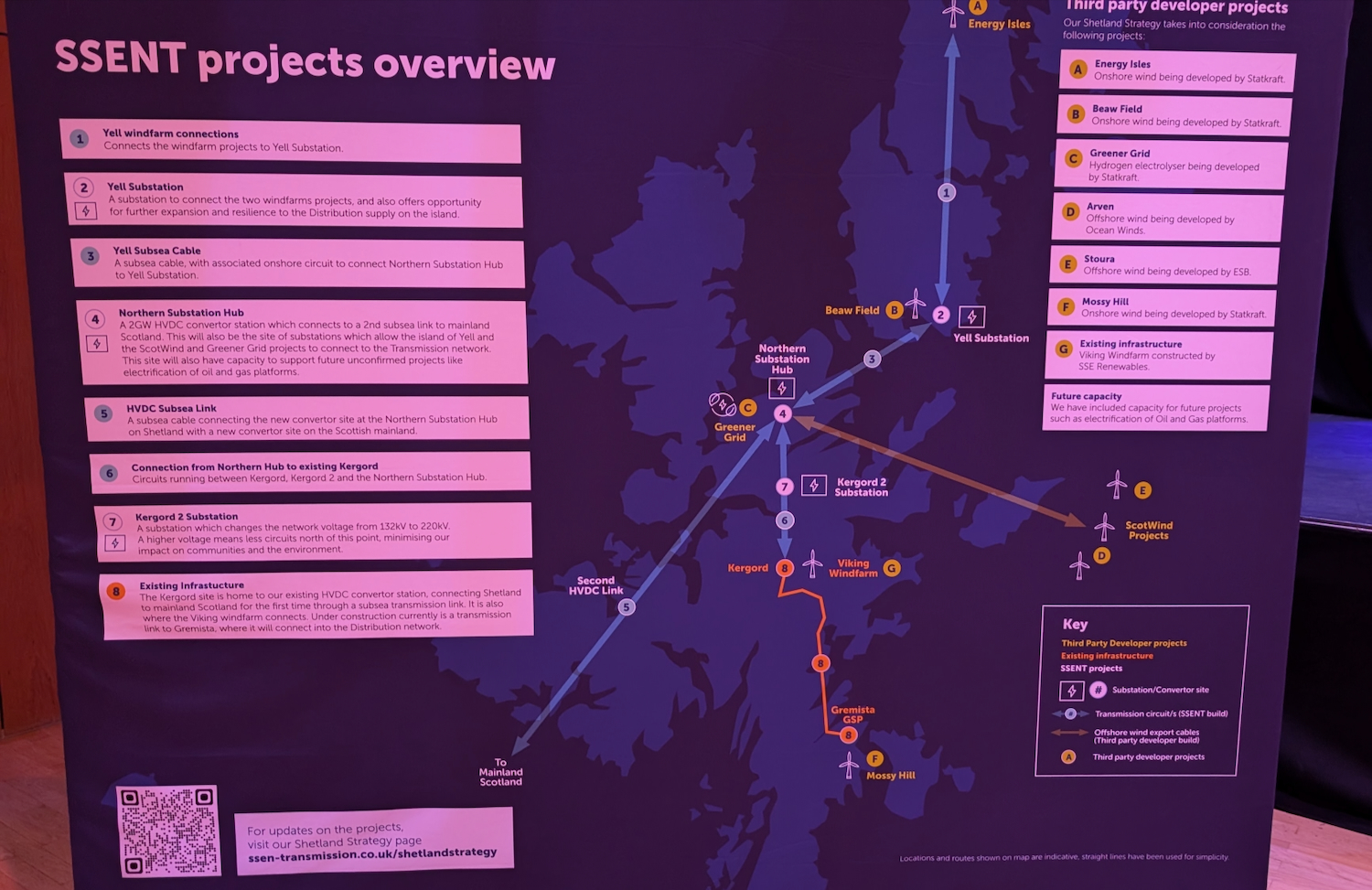Science
SSE Considers New Substations and Pylons for Shetland’s Energy Future

Energy company SSEN is exploring plans for larger pylons and a new substation in the Shetland Islands as part of a significant upgrade to the region’s energy infrastructure. The proposed pylons would be located between Kergord and a future 2GW substation hub planned for the Sullom Voe and Scatsta areas. These changes are intended to support future energy projects, including a second high-voltage direct current (HVDC) subsea cable to the Scottish mainland and offshore wind developments east of Shetland.
The potential investment in new infrastructure could yield a one-time community benefit payment of up to £2 million, although this would not be an annual contribution. Currently, SSEN operates the 103-turbine Viking wind farm in Shetland’s Central Mainland and is actively engaging with the local community to discuss these developments.
Community Engagement and Infrastructure Plans
On October 3, 2023, SSEN hosted a community engagement event at Mareel, providing an opportunity for residents to interact with a range of energy developers. Among them were representatives from Statkraft, the team behind the Stoura offshore wind farm, and Shetland Aerogenerators. Alan Kelly, lead project manager for SSEN Transmission, stated that the event was designed to address feedback from local residents who expressed difficulty in understanding the broader energy strategy.
Kelly emphasized the importance of community involvement, stating, “We want to engage with the community.” He acknowledged concerns raised by local councillors regarding the potential installation of steel lattice pylons, which could be necessary for the increased voltage of the proposed transmission lines. The new substation in the Kergord area would step up voltage from 132kV to 220kV, requiring larger pylons, which would differ in appearance from existing structures in the region.
While the existing overhead lines run at 132kV, those proposed for the Kergord to North Mainland route would necessitate a larger design. Kelly noted that traditional four-legged pylons would be employed, which would resemble the Bressay transmission mast but would not reach similar heights.
Future Energy Strategy and Local Concerns
SSEN’s strategy for Shetland revolves around establishing a second HVDC link, which would connect various energy projects and enhance the overall energy network. The existing 600MW subsea cable from Kergord to Caithness allows for power exports, while the proposed second HVDC link aims to accommodate offshore wind energy and additional onshore wind farms in Yell.
Kelly remarked that the precise landing location for the second HVDC cable in Shetland remains undecided, with the North Mainland, particularly the Yell Sound area, under consideration. The northern hub, which would serve as a connection point for several developments, is expected to be significantly larger than the current Kergord site, measuring 800 metres by 500 metres.
Concerns have been voiced by local councillors regarding the visual impact of the proposed pylons. Stephen Leask, a councillor for Lerwick North and Bressay, expressed a preference for underground cabling, citing the potential negative effects on Shetland’s landscape and environment. He remarked on the high energy costs faced by Shetland residents and urged for more sensitivity towards the island’s visual appeal in planning decisions.
In response to these concerns, Kelly assured residents that SSEN is committed to community consultation. He acknowledged the challenges of underground cabling, particularly in peatland areas, which can be technically difficult and costly compared to overhead lines.
Kelly also highlighted the community benefits that could arise from these projects, including job creation and opportunities in the local supply chain. SSEN is actively working with local housing associations to address housing needs for the transient workforce involved in construction projects.
As SSEN continues to develop its energy strategy for Shetland, it remains focused on building a network that accommodates future growth and aligns with government scenarios for electrification and renewable energy. Kelly concluded, “What we’re trying to present today is the future plans. We’ve certainly taken the government’s future scenarios into consideration.”
-

 Health3 months ago
Health3 months agoNeurologist Warns Excessive Use of Supplements Can Harm Brain
-

 Health3 months ago
Health3 months agoFiona Phillips’ Husband Shares Heartfelt Update on Her Alzheimer’s Journey
-

 Science2 months ago
Science2 months agoBrian Cox Addresses Claims of Alien Probe in 3I/ATLAS Discovery
-

 Science2 months ago
Science2 months agoNASA Investigates Unusual Comet 3I/ATLAS; New Findings Emerge
-

 Science1 month ago
Science1 month agoScientists Examine 3I/ATLAS: Alien Artifact or Cosmic Oddity?
-

 Entertainment5 months ago
Entertainment5 months agoKerry Katona Discusses Future Baby Plans and Brian McFadden’s Wedding
-

 Science1 month ago
Science1 month agoNASA Investigates Speedy Object 3I/ATLAS, Sparking Speculation
-

 Entertainment4 months ago
Entertainment4 months agoEmmerdale Faces Tension as Dylan and April’s Lives Hang in the Balance
-

 World3 months ago
World3 months agoCole Palmer’s Cryptic Message to Kobbie Mainoo Following Loan Talks
-

 Science1 month ago
Science1 month agoNASA Scientists Explore Origins of 3I/ATLAS, a Fast-Moving Visitor
-

 Entertainment2 months ago
Entertainment2 months agoLewis Cope Addresses Accusations of Dance Training Advantage
-

 Entertainment3 months ago
Entertainment3 months agoMajor Cast Changes at Coronation Street: Exits and Returns in 2025









